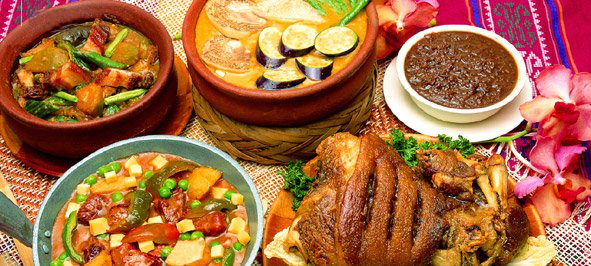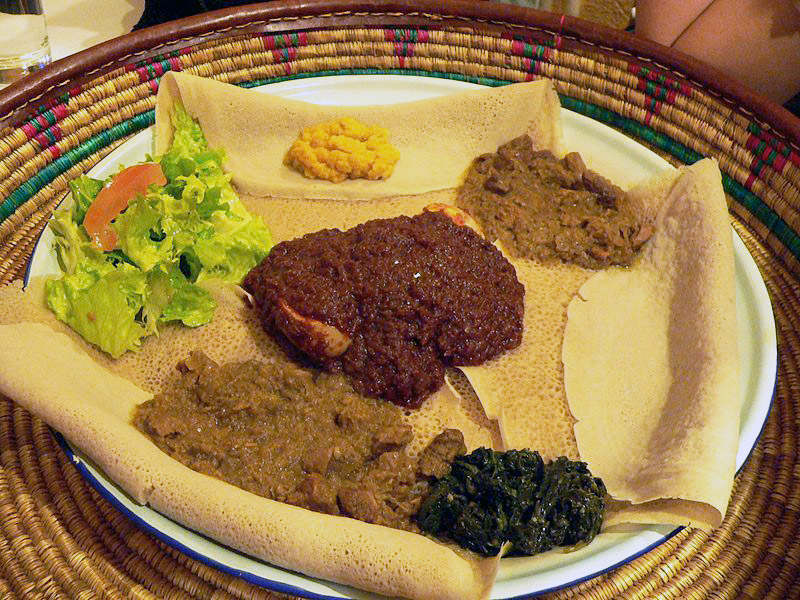|
Kumukunsi
Kumukunsi is a traditional Filipino deep-fried doughnut originating from the Maguindanao people. It is made from rice flour, duck eggs, and sugar. It is traditionally fried into spiral shapes. It has a creamy flavor, similar to pancakes. See also *Binangkal *Lokot-lokot *Panyalam *Shakoy Shakoy (Cebuano language, Cebuano: ''siyakoy''; Tagalog language, Tagalog: ''siyakoy''; Hokkien ), also known as ''lubid-lubid'' ("little rope") or bicho bicho, is a traditional Filipino cuisine, Filipino deep-fried twisted doughnut. It is tra ... References Philippine doughnuts Philippine egg dishes Rice flour dishes {{Philippines-cuisine-stub ... [...More Info...] [...Related Items...] OR: [Wikipedia] [Google] [Baidu] |
Doughnut
A doughnut or donut () is a type of pastry made from leavened fried dough. It is popular in many countries and is prepared in various forms as a sweet snack that can be homemade or purchased in bakeries, supermarkets, food stalls, and franchised specialty vendors. ''Doughnut'' is the traditional spelling, while ''donut'' is the simplified version; the terms are used interchangeably. Doughnuts are usually deep fried from a flour dough, but other types of batters can also be used. Various toppings and flavors are used for different types, such as sugar, chocolate or maple glazing. Doughnuts may also include water, leavening, eggs, milk, sugar, oil, shortening, and natural or artificial flavors. The two most common types are the ring doughnut and the filled doughnut, which is injected with fruit preserves (the jelly doughnut), cream, custard, or other sweet fillings. Small pieces of dough are sometimes cooked as doughnut holes. Once fried, doughnuts may be glazed with ... [...More Info...] [...Related Items...] OR: [Wikipedia] [Google] [Baidu] |
Lokot-lokot
Lokot-lokot or Locot-locot is a delicacy common in Mindanao and the Sulu Archipelago in the Philippines. It is also referred to as jaa in Sulu; tagaktak, tinagtag, tinadtag, or tinagaktak in Maguindanao, and amik in Davao del Sur. Its texture is crunchy, usually colored golden-brown. Lokot-Lokot is usually produced and served on special occasions such as the Muslim feast of Eid al-Fitr. Lokot-Lokot is made by repeatedly pounding glutinous rice until it becomes fine powder which is then blended with water and other ingredients to create a thick batter. The mixture is then poured into a halved coconut shell with holes called an ''uluyan'' directly into frying oil, resulting in fried mats of rice noodles. It is then formed into rolls or folded into a wedge using two wooden spoons called the ''gagawi''. See also * Daral (food) * Kumukunsi *Panyalam *Shakoy Shakoy (Cebuano language, Cebuano: ''siyakoy''; Tagalog language, Tagalog: ''siyakoy''; Hokkien ), also known as ''lubid ... [...More Info...] [...Related Items...] OR: [Wikipedia] [Google] [Baidu] |
Panyalam
''Panyalam'' or ''panyam'', is a traditional Philippine cuisine, Filipino-Moro people, Bangsamoro fried rice cake, rice pancake. It is made with galapong, ground glutinous rice, ''muscovado'' (or brown sugar), and coconut milk mixed into a batter (cooking), batter that is deep-fried. ''Panyalam'' originates from Mindanao and nearby islands. It is particularly popular among Islam in the Philippines, Muslim Filipinos, including among the Maguindanao people, Maguindanao, Maranao people, Maranao, Sama-Bajau people, Sama-Bajau, and Tausug people. It is commonly served during special occasions and religious holidays (notably during Hari Raya). It is also a traditional dish among native Christian Filipinos, Christian and animist Lumad groups, like the Mansaka and non-Islamized communities of the Sama-Bajau people, Sama-Bajau. See also * Kue pinyaram * Kuzhi paniyaram *Tupig *Bibingka *Kakanin *Kumukunsi *List of pancakes *Lokot-lokot *Okoy *Palitaw *Pastil *Puto (food), Puto *Shakoy ... [...More Info...] [...Related Items...] OR: [Wikipedia] [Google] [Baidu] |
Shakoy
Shakoy (Cebuano language, Cebuano: ''siyakoy''; Tagalog language, Tagalog: ''siyakoy''; Hokkien ), also known as ''lubid-lubid'' ("little rope") or bicho bicho, is a traditional Filipino cuisine, Filipino deep-fried twisted doughnut. It is traditionally made with flour, sugar, salt, and yeast and deep-fried. It is then sprinkled with white sugar. Variants of shakoy can also be made with other kinds of flour, most notably with rice flour, which results in a chewier version that is also usually coated with sesame seeds. Dry and crunchy versions of shakoy, which are usually much smaller, are known as ''pilipit''. These types of twisted doughnuts also have versions in different countries. Like the ''Kkwabaegi'' of Korea, ''Mahua (snack), Mahua'' in China and Taiwan, and ''Treccia d'oro, Treccia'' in Italy. Shakoy is often enjoyed as a snack or a dessert, and it is also served for breakfast. See also *Binangkal *Kumukunsi *Lokot-lokot *Panyalam *Untir-untir *Pilipit *Cakoi / Cakw ... [...More Info...] [...Related Items...] OR: [Wikipedia] [Google] [Baidu] |
Philippines
The Philippines, officially the Republic of the Philippines, is an Archipelagic state, archipelagic country in Southeast Asia. Located in the western Pacific Ocean, it consists of List of islands of the Philippines, 7,641 islands, with a total area of roughly 300,000 square kilometers, which are broadly categorized in Island groups of the Philippines, three main geographical divisions from north to south: Luzon, Visayas, and Mindanao. With a population of over 110 million, it is the world's List of countries and dependencies by population, twelfth-most-populous country. The Philippines is bounded by the South China Sea to the west, the Philippine Sea to the east, and the Celebes Sea to the south. It shares maritime borders with Taiwan to the north, Japan to the northeast, Palau to the east and southeast, Indonesia to the south, Malaysia to the southwest, Vietnam to the west, and China to the northwest. It has Ethnic groups in the Philippines, diverse ethnicities and Culture o ... [...More Info...] [...Related Items...] OR: [Wikipedia] [Google] [Baidu] |
Maguindanao
Maguindanao (; Maguindanaon: ''Dairat nu Magindanaw''; Iranun: ''Perobinsia a Magindanao''; ) was a province of the Philippines located in the Bangsamoro Autonomous Region in Muslim Mindanao (BARMM). From 2014 to 2022, its provincial capital was Buluan, but the legislative branch of government, the Maguindanao Provincial Board, convened at the old provincial capitol in Sultan Kudarat. It bordered Lanao del Sur to the north, Cotabato to the east, Sultan Kudarat to the south, and Illana Bay to the west. It is now used collectively to refer to the provinces of Maguindanao del Sur and Maguindanao del Norte, with which it was replaced with since September 18, 2022 after a division of the province was approved in a plebiscite. History Maguindanao Sultanate According to Maguindanao royal records, Sharif Muhammad Kabungsuan of Johor introduced Islam to the Maguindanaos at the end of the 15th century. He subsequently married a Maranao princess of Malabang and established th ... [...More Info...] [...Related Items...] OR: [Wikipedia] [Google] [Baidu] |
Filipino Cuisine
Filipino cuisine is composed of the cuisines of more than a hundred distinct Ethnic groups in the Philippines, ethnolinguistic groups found throughout the Philippines, Philippine archipelago. A majority of mainstream Filipino dishes that comprise Filipino cuisine are from the food traditions of various ethnolinguistic groups and tribes of the archipelago, including the Ilocano people, Ilocano, Pangasinan people, Pangasinan, Kapampangan people, Kapampangan, Tagalog people, Tagalog, Bicolano people, Bicolano, Visayan, Chavacano, and Maranao people, Maranao ethnolinguistic groups. The dishes associated with these groups evolved over the centuries from a largely indigenous (largely Austronesian peoples, Austronesian) base shared with maritime Southeast Asia with varied influences from Chinese cuisine, Chinese, Spanish cuisine, Spanish, and American cuisine, American cuisines, in line with the major waves of influence that had enriched the cultures of the archipelago, and adapted us ... [...More Info...] [...Related Items...] OR: [Wikipedia] [Google] [Baidu] |
Deep-fried
Deep frying (also referred to as deep fat frying) is a cooking method in which food is submerged in hot fat, traditionally lard but today most commonly oil, as opposed to the shallow frying used in conventional frying done in a frying pan. Normally, a deep fryer or chip pan is used for this; industrially, a pressure fryer or vacuum fryer may be used. Deep frying may also be performed using oil that is heated in a pot. Deep frying is classified as a hot-fat cooking method. Typically, deep frying foods cook quickly since oil has a high rate of heat conduction and all sides of the food are cooked simultaneously. The term "deep frying" and many modern deep-fried foods were not invented until the 19th century, but the practice has been around for millennia. Early records and cookbooks suggest that the practice began in certain European countries before other countries adopted the practice. Deep frying is popular worldwide, with deep-fried foods accounting for a large portion ... [...More Info...] [...Related Items...] OR: [Wikipedia] [Google] [Baidu] |
Maguindanao People
The Maguindanaon people are an Austronesian ethnic group from the Philippines. The Maguindanaon are part of wider political identity of Muslims known as Moro, who constitute the third largest ethnic group of Mindanao, Sulu and Palawan. The Maguindanaons constitute the ninth largest Filipino ethnic group and are known for being distinguished in the realm of visual art. They have been renowned as metalworkers, producing the wavy-bladed keris ceremonial swords and other weapons, as well as gongs. The Maguindanaons historically had an independent sultanate known as the Sultanate of Maguindanao which comprises modern day Maguindanao del Norte, Maguindanao del Sur, Zamboanga Peninsula, Davao Region and Soccsksargen. The name "Maguindanao/Magindanaw" itself was corrupted by Spanish sources into "Mindanao", which became the name for the entire island of Mindanao. Etymology The word ''Maguindanao or Magindanaw'' means "people of the flood plains", from the word ''Magi'inged'' that m ... [...More Info...] [...Related Items...] OR: [Wikipedia] [Google] [Baidu] |
Rice Flour
Rice flour (also rice powder) is a form of flour made from finely milled rice. It is distinct from rice starch, which is usually produced by steeping rice in lye. Rice flour is a common substitute for wheat flour. It is also used as a thickening agent in recipes that are refrigerated or frozen since it inhibits liquid separation. Rice flour may be made from either white rice, brown rice or glutinous rice. To make the flour, the Rice hulls, husk of rice or paddy is removed and raw rice is obtained, which is then ground to flour. Types and names By rice Rice flour can be made from Indica rice, indica, Japonica rice, japonica, and wild rice varieties. Usually, rice flour ( zh, c=米粉, p=mǐfěn, , , , , , , , , ) refers to flour made from non-glutinous white rice. When made with glutinous rice (or sweet rice), it is called glutinous rice flour or sweet rice flour ( zh, c=糯米粉, p=nuòmǐ fěn, Japanese language, Japanese: ; Romanization of Japanese, romanized: ''shirat ... [...More Info...] [...Related Items...] OR: [Wikipedia] [Google] [Baidu] |
Pancake
A pancake, also known as a hotcake, griddlecake, or flapjack, is a flat type of batter bread like cake, often thin and round, prepared from a starch-based Batter (cooking), batter that may contain eggs, milk, and butter, and then cooked on a hot surface such as a griddle or frying pan. Archaeological evidence suggests that pancakes were probably eaten in prehistoric societies. The pancake's shape and structure varies worldwide. In England, pancakes are often Leavening agent, unleavened and resemble a crêpe. In Scotland and North America, a leavening agent is used (typically baking powder) creating a thick fluffy pancake. A ''crêpe'' is a thin pancake of Brittany, Breton origin cooked on one or both sides in a special pan or crepe maker to achieve a lacelike network of fine bubbles. A well-known variation originating from southeast Europe is palatschinke, a thin moist pancake fried on both sides and filled with jam, cream cheese, chocolate, or ground walnuts, but many other f ... [...More Info...] [...Related Items...] OR: [Wikipedia] [Google] [Baidu] |



